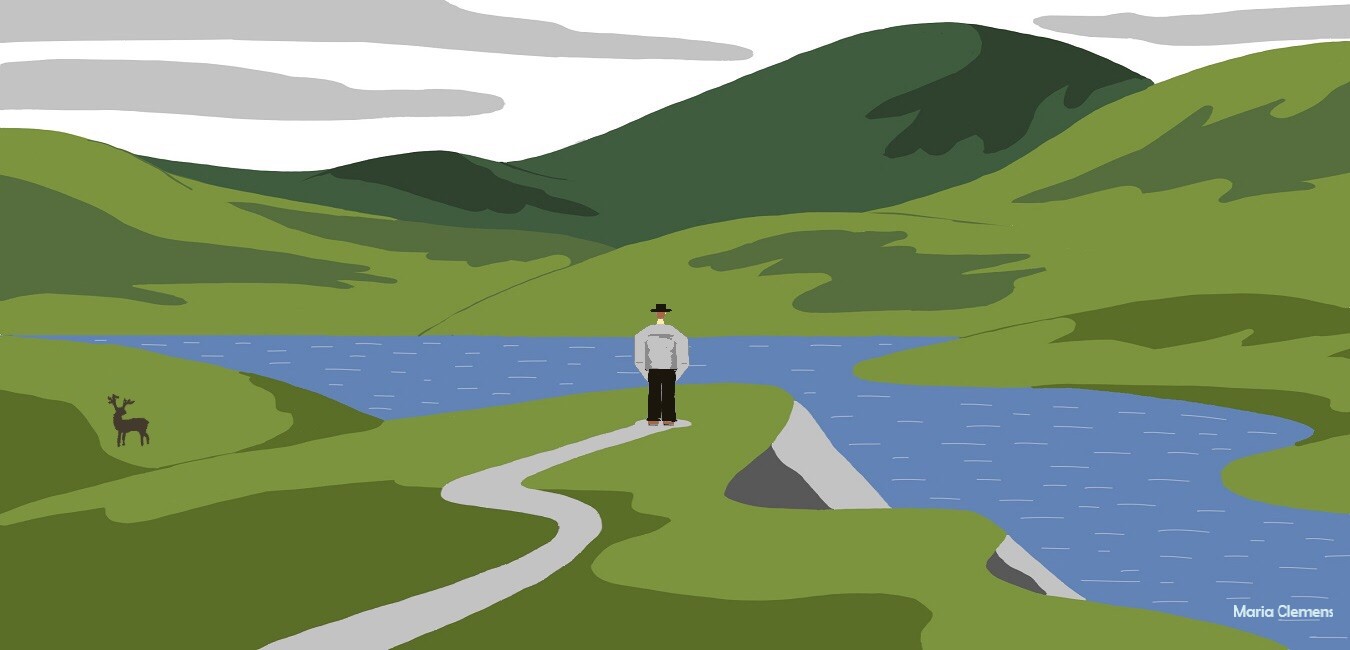COP26 series: spotlight on water management
By Maria Clemens - Posted on 24 September 2021
With COP26 commencing in November, water management is in the spotlight. Scotland is a water-rich country but could that change as a result of the climate crisis? In the first of a series of blogs in the run up to COP26, PhD student Maria Clemens looks at water resources and what issues need to be taken into account in managing this important resource.
Water resource management tries to predict water availability and human demand to secure the future water supply in a healthy environment. However, human water use is the most challenging parameter and difficult to measure or predict because everyone values and uses water individually and differently.
Scotland is a water-rich country where water can be taken for granted as an always-available resource. Hence, it allows wasteful use as well as a flourishing economic production with high water demand. Luckily, Scotland rarely suffers from drought conditions. Still, research shows that due to limited water storage, such as groundwater, it is becoming vulnerable to water shortages in a changing climate. Therefore, a flexible adaptation strategy is needed that considers an enhanced consumption due to water abundance and an opposite need for reduction during more frequent dry months.
My research shows that the many sectors of the Scottish economy have reduced their water use over the last decade, in contrast to the domestic sector where Scottish household water consumption has risen steadily. Compared to the rest of the UK and other European countries, this development is unusual.
Distribution Network
Scotland is home to 5.4 million people in 2.45 million households. The land is divided into three geological regions of the mountainous Highlands in the north and west, a rift valley of the Central Lowlands, and the hilly Southern Uplands. Most of the population is located in the Central Lowlands belt. To supply all consumers and businesses with potable water, a huge coordination and distribution network is needed.
My historical analysis of this network goes back to the 1970s, where various small over-burdened water suppliers merged into thirteen suppliers. Those merged into a single supplier, Scottish Water, in 2002 for better coordination and equal service. The state of technology was insufficient for detailed forecasting, especially when it came to the uncomfortable and costly issue of leakage. In fact, it was - and still is - difficult to estimate the water losses of such a network. Although metering systems help, they are only used to a limited extent and mainly for commercial consumers.
Water Users
My research of the period from 1971 to 2018 found that the water demand of the measured supply, mainly provided for industry and services, reduced over time by half while the demand of the unmeasured supply, primarily for public institutions, governmental services, urban landscaping and households, increased twice as much. In 50 years, the water consumption ratio shifted from a more economic driven model to a domestic dominated one.
This seems to be wasteful usage by a slow-growing population, but is high water use in a water-rich country really all that bad? After all, Scotland is famous for its water, with lots of rain and countless rivers, waterfalls and lochs. Moreover, the government is advertising the country as a Hydro-Nation, where water resources should bring the maximum benefit to the Scottish economy. So why not also for its citizens? Indeed, Scotland attracts many water demanding businesses, thriving, growing, and consequently consuming more water. But in order to answer whether this water is being used wastefully or not, I needed to know how much water was required to develop products or services efficiently.
After analysing water-use efficiency, it became clear that nearly all economic sectors with heavy water demands have improved their water use efficiency – besides the domestic sector. However, the method for calculating the water use efficiency of an economic sector is not applicable to households. Hence, population growth was used to measure the possible increasing number of consumers, but Scotland’s population only grew by 3.8% in those five decades, which cannot explain a doubled consumption alone.
Water use in Europe
To understand the household water consumption change, it is best to analyse the amount of water that an average person uses in litres per person per day (l/p/d). That consumption can vary a lot, as we see in Europe, where the daily amount ranged from 60 to 200 litres in 2017. Thereby, the average consumption in Europe was 128 litres, and Scotland was already one of the higher European consumers with 153 l/p/d. However, since 2017 a lot of effort has been made in the EU to address climate change and enhance sustainable behaviours and use of resources. At the same time, it had to deal with extraordinary heatwaves, droughts and water shortages during the summer months. As a result, most of the countries kept their average water consumption, while some of them had an impressive decreasing trend. However, there are also countries with a continuously rising water demand – and one of them is Scotland. So why are some countries decreasing their water consumption while others increasing it continuously?
Driving Factors
Many factors control water consumption, with each person having their individual needs and preferences of use water. Depending on the level of awareness of individual water consumption, water is used very differently, especially in the bathroom or kitchen. Some people try to save as much water as possible, while others use it to the fullest. But besides behaviour, consumption also depends on other things, such as tap water quality, water-intensive hobbies or pets, etc. Also relevant is the use and age of water-consuming appliances such as washing machines and dishwashers and whether they include water-saving technology. All those factors influence the individual consumed water volume per day but when analysed at a higher level, these factors flatten out within the average consumption of the national studies. Critical elements of those are – besides the sometimes still-unknown size of water losses due to leakages – the household size, economic income, and use of water meters:
Household size: Scotland’s household size has changed drastically over the past decades. In the 1970s, a three-person household was most common, which changed in 2011, where the one-person household became the most common one. Hence fewer people share the water, as they do not cook, clean or use it together.
Economic income: Economic income increased and doubled in the last 20 years, enabling more or bigger water-intensive devices and properties like a garden, a pool, or a holiday house. With more prosperity, the rural exodus also changed; hence more people can live in countryside houses and commute to the cities.
Water meters: Household water consumption is not metered as it is included in a fixed charge as a percentage proportion of council tax that each household pays. However, water meters create more awareness of consumption, as shown in England and Wales, where metered households use 25% less water. Because the metering enables financial rewards with less consumption and motivates more water-saving behaviour.
Future Prospects
There are several ongoing agendas to reduce and optimise water consumption in Europe. Hence the UK has ambitious targets to minimise the average consumption to 118 litres per person per day by 2050. This also fits into Scotland’s plan to become a Hydro Nation with responsible and sustainable water use. Nevertheless, to reach such a minimal level of water consumption, Scotland will have to drastically reduce its current average consumption of 165 l/p/d. In addition, some profound behavioural changes are needed to reverse the trend of its steadily increasing demand. Especially when, as a result of the ongoing climate crisis, Scotland will also experience a higher frequency of heatwaves and periods of water shortages in the near future.










